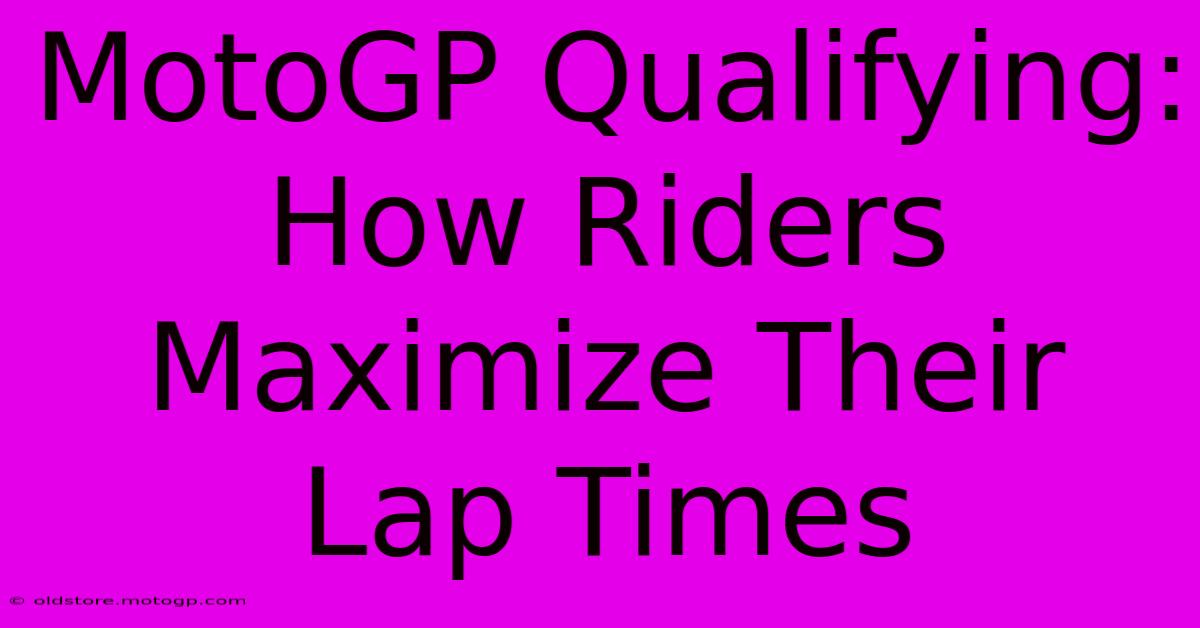MotoGP Qualifying: How Riders Maximize Their Lap Times

Table of Contents
MotoGP Qualifying: How Riders Maximize Their Lap Times
MotoGP qualifying is a high-stakes game of precision, strategy, and nerve. The fight for pole position isn't just about bragging rights; it significantly impacts race day performance, offering a crucial advantage at the start and throughout the Grand Prix. But how do these incredible riders shave those precious milliseconds off their lap times? Let's delve into the techniques and strategies they employ to secure the best possible grid slot.
Understanding the Qualifying Format
Before we dive into the techniques, it's crucial to understand the current MotoGP qualifying format. The session is split into two parts:
- Q1: The slower riders from Free Practice 3 (FP3) compete here. The top two riders from Q1 advance to Q2.
- Q2: The top 10 riders from FP3, plus the two qualifiers from Q1, battle it out for pole position. The grid positions for the race are determined by the final results of Q2.
This format creates intense pressure and necessitates a perfectly executed qualifying lap.
Key Strategies for Maximum Lap Time
Several factors contribute to a rider's success in qualifying, and it's a delicate balance of these elements that determines their performance.
1. Tire Management:
Tire choice is paramount. Riders must select the right tire compound (soft, medium, or hard) based on track conditions, temperature, and the predicted race conditions. A soft tire provides superior grip and speed for a single flying lap but degrades faster. Choosing the right tire is a critical strategic decision made in consultation with the team.
2. Optimal Track Conditions:
Timing is everything. Riders closely monitor track evolution throughout the qualifying sessions. The track often improves as more rubber is laid down, resulting in increased grip. Experienced riders can precisely judge the ideal time to set their fastest lap, maximizing the available grip. This also includes understanding the impact of wind, sun and track temperature.
3. Perfect Line & Race Setup:
Finding the perfect racing line is critical. This involves expertly navigating every turn, minimizing lean angles, and maximizing acceleration and braking points. Every rider has a slightly different style and line, constantly refined through practice and data analysis. Furthermore, although qualifying is about a single fast lap, the bike's setup must still be a compromise between qualifying performance and race-pace consistency.
4. Electronics and Data Analysis:
Modern MotoGP bikes are equipped with sophisticated electronics and data acquisition systems. Riders and their engineers meticulously analyze telemetry data from previous sessions to identify areas for improvement. This allows them to fine-tune settings for suspension, engine mapping, and traction control for optimal performance on each section of the track.
5. Slipstream and Drafting:
While it might seem counterintuitive, drafting other riders can help achieve better lap times in certain situations. Following closely behind another bike reduces aerodynamic drag, allowing for higher top speed on straights, ultimately resulting in faster lap times. However, this strategy requires precise timing and coordination to avoid disrupting the rider's own flow and risking a collision.
6. Physical and Mental Fitness:
MotoGP racing is physically and mentally demanding. Maintaining peak physical condition is crucial to withstand the intense concentration and physical strain required during qualifying. Mental fortitude is equally important; the pressure to perform at the highest level under intense scrutiny demands exceptional mental strength and focus.
Conclusion: The Art of the Perfect Lap
Achieving a top qualifying result in MotoGP is a complex endeavor, blending scientific precision with instinctive riding skill. The mastery of tire management, meticulous data analysis, strategic exploitation of track conditions, and unparalleled physical and mental fortitude all contribute to the riders' quest for pole position. The pursuit of that perfect lap is a testament to the dedication and skill at the pinnacle of motorcycle racing.

Thank you for visiting our website wich cover about MotoGP Qualifying: How Riders Maximize Their Lap Times. We hope the information provided has been useful to you. Feel free to contact us if you have any questions or need further assistance. See you next time and dont miss to bookmark.
Featured Posts
-
Moto Gp Austin 2025 Heart Pounding Action
Feb 25, 2025
-
Yamaha V4 Moto Gp The Art Of Winning
Feb 25, 2025
-
Moto Gp Austin 2025 Beyond The Track
Feb 25, 2025
-
Witness The Culmination Of A Season Moto Gp On Nbc
Feb 25, 2025
-
High Octane Thrills Must See Moto Gp Pictures
Feb 25, 2025
